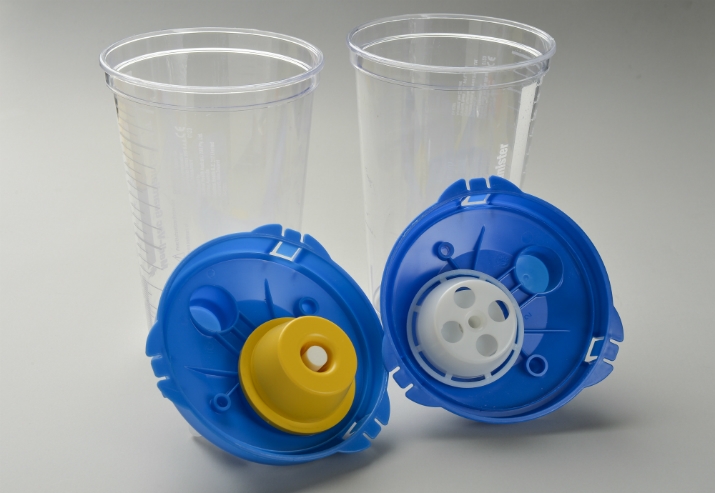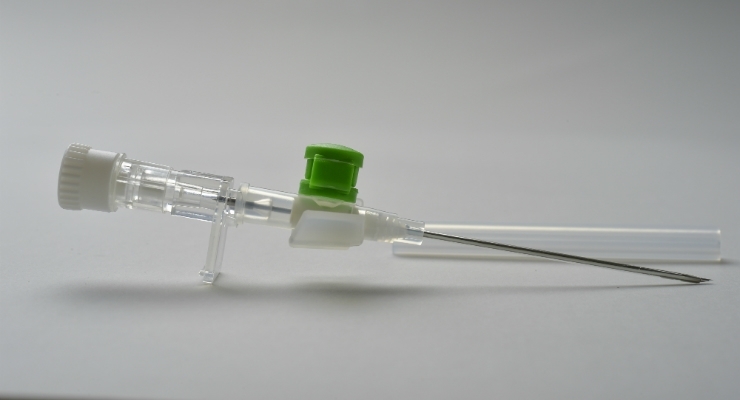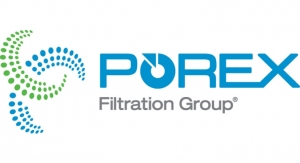Released by Porex Corporation (Filtration Group)
Jack Chan, Global Marketing Director, Porex04.28.20
From simple blood collection to complex surgical procedures, a range of medical procedures present dangerous opportunities for the spread of contaminants—and, subsequently, the likelihood of healthcare-associated infections (HAIs). Despite advancements in medical device equipment and standards for safety, about one in 31 hospital patients has at least one healthcare-associated infection (HAI), according to the CDC.1 With these risks and realities in mind, facilities are recognizing a critical need to protect their patients and their own staffs from harmful bacteria and pathogens. To ensure any threats to well-being are kept at bay, providers are seeking solutions for improved safety and reliability in their medical devices.
As a first step in the fight against HAIs, it is important to understand the technologies and components that mitigate risk during procedures, as well as the materials that impact the ability of those tools to perform properly. Porous polymers, easily manipulated and customized for air flow, fluid control and other functional needs that enable devices to operate and perform as designed, can provide a suitable solution for maintaining sterility in medical devices and preventing the transfer of infections to the surrounding environment.
In Blood Collection
The flexibility and adaptability of porous polymers makes them suitable for a diverse range of infection-prevention applications. In blood withdrawal, for example, arterial syringe vents made from porous polymer materials protect healthcare workers from exposure to dangerous pathogens when collecting blood samples from patients for blood gas analysis. A self-sealing vent optimizing airflow and pressure control immediately shuts off upon contact with fluids, including blood, eliminating blood bypass. The vent also preserves the sample in a controlled environment, maintaining critical sample purity.
Porous polymer materials can provide similar functionality within safety IV catheter vents, which are also used for blood withdrawal in addition to other procedures including administering drugs or introducing fluids like sterile saline. When inserting a catheter into a patient, the professional can feel confident they will not come in contact with harmful bacteria or substances that can lead to infection.

Suction canisters with self-sealing filters can protect the integrity of hospital central vacuum lines by preventing unwanted fluid transmission into the system. Image courtesy of Porex.
In the Operating Room
For surgical procedures in hospital settings, suction canisters with self-sealing filters can protect the integrity of hospital central vacuum lines by preventing unwanted fluid transmission into the system. Behaving as a responsive valve, the suction canister filters automatically and instantly shut off airflow from the canister when collected fluids come in contact with the filter—a sign they have reached a critical capacity level. This functionality traps air and infectious fluids, stopping the infiltration of these contaminants into central vacuum lines. High bacterial filtration efficiency (BFE) provided in the porous polymer materials also helps to maintain sterility and purity throughout this process.
In surgeries that involve cement-bone mixing, porous fume absorbers work to eradicate toxic fumes and gases generated by the procedure. Inserted into the mixing chamber, the components utilize porous plastic in conjunction with activated carbon to trap monomer fumes by balancing air flow rates, optimal back flow pressure and out-gas residence times. This absorption process allows for maximum removal of offensive gases prior to discharge from the container, minimizing the chance of infection in the operating room.
In Packaging
For surgical and dental instruments packaged in reusable container systems, robust, reusable filters made from porous polymers can maintain content integrity throughout transportation and storage, both during and after steam sterilization. Engineered with sintered polytetrafluoroethylene (PTFE), reusable filters offer high airflow and high bacterial filtration efficiency and function in two ways—as a vent to allow pressure equalization during the sterilization process and as a filter barrier to bacteria during subsequent storage. Durable, resilient and hydrophobic, the components are designed to withstand repeated sterilization cycles and do not need to be replaced for the life of the container. This enhanced lifespan provides a more reliable, convenient and long-term solution over traditional paper or textile filters, which are typically disposable or single-use options.
Regardless of application, medical devices and tools that leverage porous polymer materials enable improved performance and enhance safety in critical healthcare environments like the OR, providing life-saving innovation. With opportunities for customization, capabilities to meet requirements for highly specialized devices and suitability for high-volume assembly and simple press-fit installation, components built with the materials can improve the ease of device design for manufacturers while also improving standards for safety. Most importantly, porous polymer materials serve as an important ally in combatting infection, allowing facilities to reassure their staffs and their patients they are receiving the proper care and protection at all times.
Reference:
1. https://www.cdc.gov/hai/data/index.html
Jack Chan is the global marketing director for Porex’s medical market with more than 20 years serving the medical device industry. He is responsible for driving Porex's medical marketing strategy through his extensive experience in working with medical grade polymers used in medical devices. Chan received his Ph.D. in physical chemistry of polymers from the University of Texas—Austin, a Master’s in Science in polymer science and engineering from the University of Massachusetts in Amherst, and double Bachelor’s of Science degrees in polymer science and chemistry from the University of Southern Mississippi.
Learn more about Porex Corporation (Filtration Group)
As a first step in the fight against HAIs, it is important to understand the technologies and components that mitigate risk during procedures, as well as the materials that impact the ability of those tools to perform properly. Porous polymers, easily manipulated and customized for air flow, fluid control and other functional needs that enable devices to operate and perform as designed, can provide a suitable solution for maintaining sterility in medical devices and preventing the transfer of infections to the surrounding environment.
In Blood Collection
The flexibility and adaptability of porous polymers makes them suitable for a diverse range of infection-prevention applications. In blood withdrawal, for example, arterial syringe vents made from porous polymer materials protect healthcare workers from exposure to dangerous pathogens when collecting blood samples from patients for blood gas analysis. A self-sealing vent optimizing airflow and pressure control immediately shuts off upon contact with fluids, including blood, eliminating blood bypass. The vent also preserves the sample in a controlled environment, maintaining critical sample purity.
Porous polymer materials can provide similar functionality within safety IV catheter vents, which are also used for blood withdrawal in addition to other procedures including administering drugs or introducing fluids like sterile saline. When inserting a catheter into a patient, the professional can feel confident they will not come in contact with harmful bacteria or substances that can lead to infection.

Suction canisters with self-sealing filters can protect the integrity of hospital central vacuum lines by preventing unwanted fluid transmission into the system. Image courtesy of Porex.
In the Operating Room
For surgical procedures in hospital settings, suction canisters with self-sealing filters can protect the integrity of hospital central vacuum lines by preventing unwanted fluid transmission into the system. Behaving as a responsive valve, the suction canister filters automatically and instantly shut off airflow from the canister when collected fluids come in contact with the filter—a sign they have reached a critical capacity level. This functionality traps air and infectious fluids, stopping the infiltration of these contaminants into central vacuum lines. High bacterial filtration efficiency (BFE) provided in the porous polymer materials also helps to maintain sterility and purity throughout this process.
In surgeries that involve cement-bone mixing, porous fume absorbers work to eradicate toxic fumes and gases generated by the procedure. Inserted into the mixing chamber, the components utilize porous plastic in conjunction with activated carbon to trap monomer fumes by balancing air flow rates, optimal back flow pressure and out-gas residence times. This absorption process allows for maximum removal of offensive gases prior to discharge from the container, minimizing the chance of infection in the operating room.
In Packaging
For surgical and dental instruments packaged in reusable container systems, robust, reusable filters made from porous polymers can maintain content integrity throughout transportation and storage, both during and after steam sterilization. Engineered with sintered polytetrafluoroethylene (PTFE), reusable filters offer high airflow and high bacterial filtration efficiency and function in two ways—as a vent to allow pressure equalization during the sterilization process and as a filter barrier to bacteria during subsequent storage. Durable, resilient and hydrophobic, the components are designed to withstand repeated sterilization cycles and do not need to be replaced for the life of the container. This enhanced lifespan provides a more reliable, convenient and long-term solution over traditional paper or textile filters, which are typically disposable or single-use options.
Regardless of application, medical devices and tools that leverage porous polymer materials enable improved performance and enhance safety in critical healthcare environments like the OR, providing life-saving innovation. With opportunities for customization, capabilities to meet requirements for highly specialized devices and suitability for high-volume assembly and simple press-fit installation, components built with the materials can improve the ease of device design for manufacturers while also improving standards for safety. Most importantly, porous polymer materials serve as an important ally in combatting infection, allowing facilities to reassure their staffs and their patients they are receiving the proper care and protection at all times.
Reference:
1. https://www.cdc.gov/hai/data/index.html
Jack Chan is the global marketing director for Porex’s medical market with more than 20 years serving the medical device industry. He is responsible for driving Porex's medical marketing strategy through his extensive experience in working with medical grade polymers used in medical devices. Chan received his Ph.D. in physical chemistry of polymers from the University of Texas—Austin, a Master’s in Science in polymer science and engineering from the University of Massachusetts in Amherst, and double Bachelor’s of Science degrees in polymer science and chemistry from the University of Southern Mississippi.
Learn more about Porex Corporation (Filtration Group)













